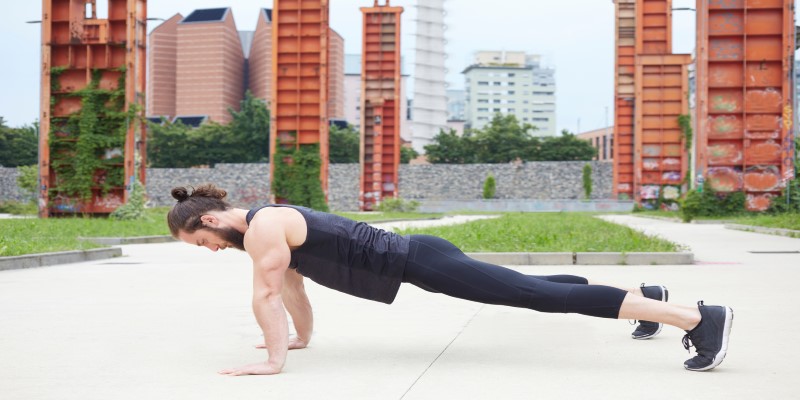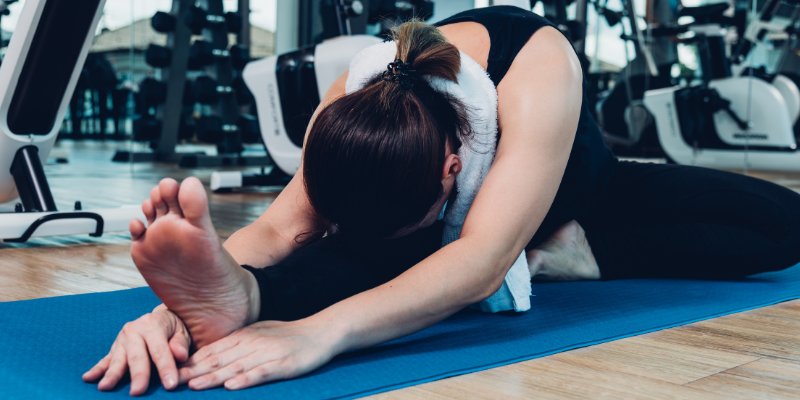Gentle Fitness: Embracing Low-Impact Exercises for a Healthier You
Feb 29, 2024 By Madison Evans
In a world where high-intensity workouts often steal the spotlight, the importance of low-impact exercises tends to be overlooked. However, these gentle forms of physical activity hold two crucial reasons why they should be an integral part of everyone's routine. Before we delve into these reasons, let's understand what low-impact exercises entail.
Understanding Low-Impact Exercises and their Reasons:
Low-impact exercises are those that minimize stress on the joints and bones while still providing an effective workout. Unlike high-impact activities that involve jumping and intense movements, low-impact exercises keep one foot on the ground at all times. These exercises are accessible to people of all fitness levels, making them an ideal choice for individuals looking to improve their health without overexertion.
Reason 1: Joint-Friendly Fitness
One of the primary reasons why low-impact exercises are crucial for everyone is their joint-friendly nature. High-impact activities, such as running and jumping, can put significant stress on the joints, potentially leading to injuries over time. In contrast, low-impact exercises, like walking, swimming, and cycling, offer a safer alternative. They provide a cardiovascular workout without subjecting your joints to excessive wear and tear.
Engaging in low-impact exercises is particularly beneficial for those with pre-existing joint conditions or arthritis. By prioritizing joint-friendly fitness, individuals can sustain an active lifestyle without compromising their long-term joint health.
Reason 2: Inclusive and Sustainable Fitness
Another compelling reason to embrace low-impact exercises is their inclusivity and sustainability. Fitness should be accessible to everyone, regardless of age, fitness level, or physical condition. High-impact workouts may discourage individuals who are new to fitness or have certain health concerns.
Low-impact exercises, on the other hand, provide a welcoming entry point for beginners and a sustainable option for those looking to maintain their fitness over the long term. Walking, swimming, and cycling are excellent examples of exercises that accommodate various fitness levels and can be easily incorporated into daily routines. This inclusivity fosters a positive approach to fitness, encouraging more people to embark on a journey towards a healthier lifestyle.
Reason 3: Reduced Risk of Overuse Injuries
Low-impact exercises are crucial in minimizing the likelihood of overuse injuries, a common occurrence in high-impact activities. Overuse injuries occur when a particular set of muscles or joints is repeatedly stressed without adequate time for recovery. This is prevalent in sports that involve repetitive motions, such as running or tennis.
Low-impact exercises, by their very nature, distribute the workload more evenly across different muscle groups, minimizing the strain on specific joints. This balanced approach not only lowers the likelihood of overuse injuries but also allows individuals to engage in physical activity more consistently over the long term. Whether you're a seasoned athlete or someone new to exercise, prioritizing low-impact activities can help you enjoy the benefits of movement without the risk of sidelining injuries.
Reason 4: Enhanced Long-Term Mobility and Functionality
Preserving mobility and functionality plays a pivotal role in upholding independence and enhancing the quality of life, particularly as we grow older. Low-impact exercises contribute significantly to enhancing long-term mobility by promoting joint flexibility and muscle strength without subjecting the body to excessive stress.
As we engage in low-impact activities, our joints go through a full range of motion, preventing stiffness and promoting flexibility. The controlled movements associated with these exercises also target various muscle groups, supporting overall muscular strength. This combination of flexibility and strength translates into improved functionality in daily tasks, making it easier to perform activities such as bending, reaching, and lifting. By investing in our mobility through low-impact exercises, we can enjoy an active and independent lifestyle well into our later years.

Benefits of Low-Impact Exercises:
Beyond the joint-friendly and inclusive nature of low-impact exercises, numerous additional benefits make them a crucial component of everyone's fitness routine.
Better Sleep Quality: The calming effect of low-impact exercises, combined with the release of endorphins, can contribute to better sleep quality. Individuals who struggle with insomnia or disrupted sleep patterns may find that incorporating gentle exercises into their routine helps improve their overall sleep hygiene.
Weight Management: Participating in consistent low-impact workouts allows for calorie burning without subjecting the body to undue stress, rendering them suitable for individuals with diverse fitness objectives.
Mental Well-Being: Exercise is not only beneficial for the body but also for the mind. Low-impact exercises, particularly those performed outdoors, have been shown to reduce stress, anxiety, and depression. The combination of gentle movement and the therapeutic effects of nature creates a holistic approach to well-being.

Incorporating Low-Impact Exercises Into Your Routine:
Now that we understand the importance and benefits of low-impact exercises let's explore how to integrate them seamlessly into our daily routines.
Start Slowly: If you're new to low-impact exercises, start slowly and gradually increase the intensity. This approach allows your body to adapt and reduces the risk of soreness or injury.
Mix It Up: Keep your routine interesting by incorporating a variety of low-impact exercises. This could include a combination of walking, swimming, cycling, and even low-impact aerobics. Mixing up your routine not only prevents boredom but also targets different muscle groups.
Prioritize Consistency: Consistency is key when it comes to reaping the benefits of low-impact exercises. Aim for at least 150 minutes of moderate-intensity exercise per week, and find a routine that fits seamlessly into your daily life.
Conclusion:
In the quest for a healthier lifestyle, it's essential to recognize the value of low-impact exercises. Their joint-friendly nature and inclusivity make them crucial for everyone, ensuring that fitness remains a sustainable and enjoyable journey.
By embracing the benefits of low-impact exercises, individuals can foster long-term well-being, both physically and mentally. So, let's step into the world of gentle fitness, where everyone can thrive and achieve their health goals without compromising on joy and inclusivity.
On this page
Understanding Low-Impact Exercises and their Reasons: Reason 1: Joint-Friendly Fitness Reason 2: Inclusive and Sustainable Fitness Reason 3: Reduced Risk of Overuse Injuries Reason 4: Enhanced Long-Term Mobility and Functionality Benefits of Low-Impact Exercises: Incorporating Low-Impact Exercises Into Your Routine: Conclusion:
Eating Right for Eczema: Best and Worst Foods Revealed

Are Electrolyte-Loaded Sports Drinks Healthy: An Understanding

The Impact of Weighted Hula Hoops: Are they Effective and Safe?

Understanding Pronation and Overpronation in Walking and Running

Essential Strength Training for Women Over 50

Daily Beneficial Yoga Poses for a Healthy Routine

Pull-up Breathing techniques: A Guide to Proper Technique

Cinnamon and Weight Loss: Exploring Myth and Reality

Gentle Fitness: Embracing Low-Impact Exercises for a Healthier You

Easy Pool Workouts For Quick Fat Burn

Atrial Fibrillation: Common Causes, Symptoms, Treatment, And More
